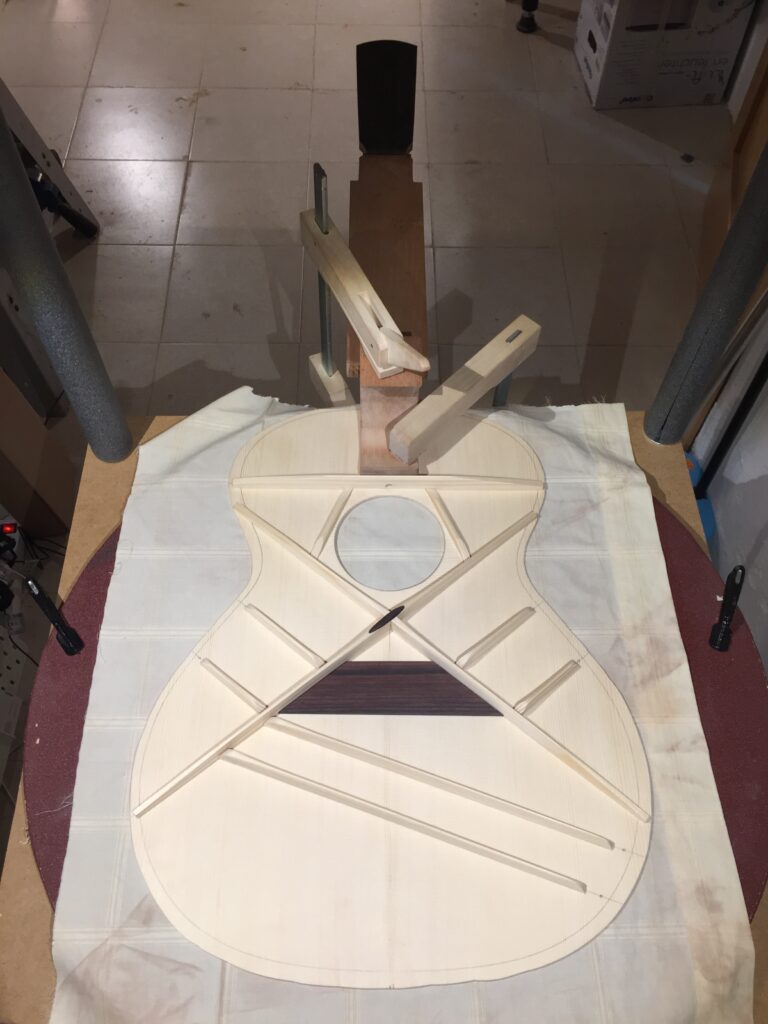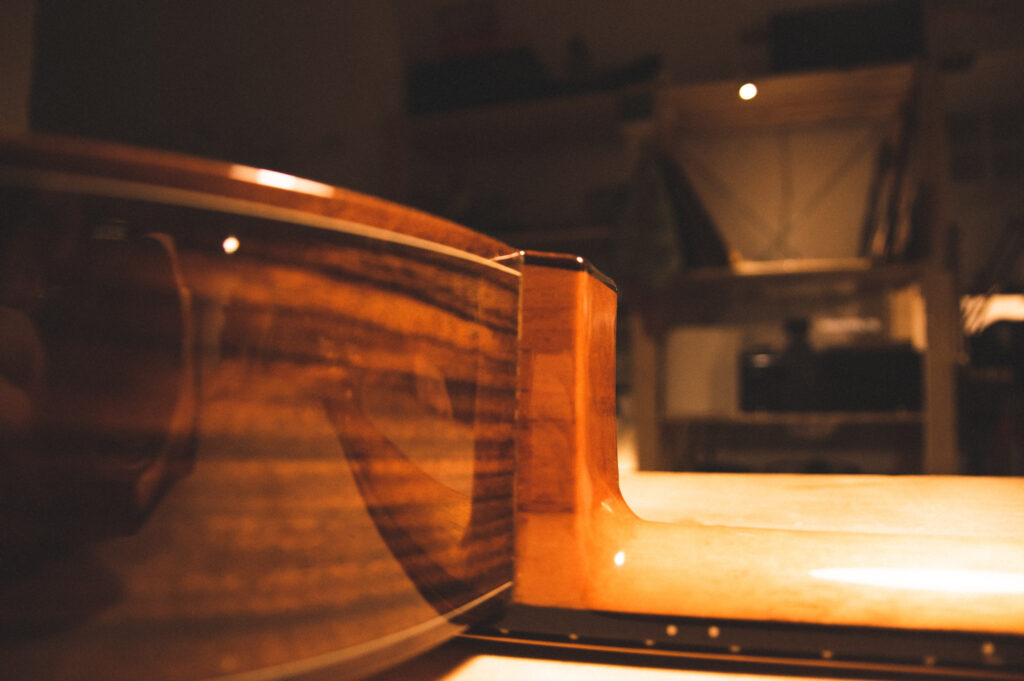At Urdiain Guitars, we want to deepen the concept of an acoustic guitar that benefits from the great contributions of the Spanish tradition to the construction of classical guitars. Our handcrafted way of working is based on the “Spanish style” of construction, established and developed by the historical builders Antonio de Torres and Manuel Ramirez in the middle of the 19th century, which was a revolution in the history of the Spanish guitar.
One of the main characteristics of this “Spanish style” is the neck and body assembly technique known as “Spanish heel”. Basically, the “Spanish heel” consists of the neck being the starting point around which the instrument is built.
This technique is one of the main differences with the most widespread way of building acoustic guitars in which the body is worked independently and then joined to the neck by means of the dove tail system inherited from violins and violas.
The “Spanish heel” represents a change in the philosophy of the construction method at the moment in which the guitar is created in an organic way from one of its most sensitive and elemental elements, the neck. First, the top is glued to the neck, to which the sides are added along. Finally, the fretboard is glued and thus the headstock and heel integrate in the same union the top, the sides and the back as if they were a single piece.


This integral contact between the body and the neck optimizes the transmission of energy making it more continuous and natural. In particular, the interplay between the top and the neck, with the addition of an ebony fingerboard, makes the instrument vibrate as a whole, enhancing its sonority and natural harmonics.
From our point of view, the “Spanish heel” is one of the most interesting techniques for the union of the neck and the body. Although it is more elaborate than the dovetail method, we think it is worth it both for the quality and personality of the sound and for the soft touch and the final consistency it brings to the instrument.


In this line, the choice of woods also plays a very important role. One of our bets is to work with combinations of woods that have given such good results throughout the history of the Spanish guitar. Mainly:
Spruce and cedar for the tops.
Indian rosewood for sides and back.
Cedar for the necks, which together with the ebony fingerboard offers us very interesting combinations with the different woods of which the top can be made.
All this without stopping to think about new combinations, with more particular woods such as exotic ebony, redwood or eucalyptus to continue progressing in achieving a sound that is a source of inspiration for the contemporary guitarist.

